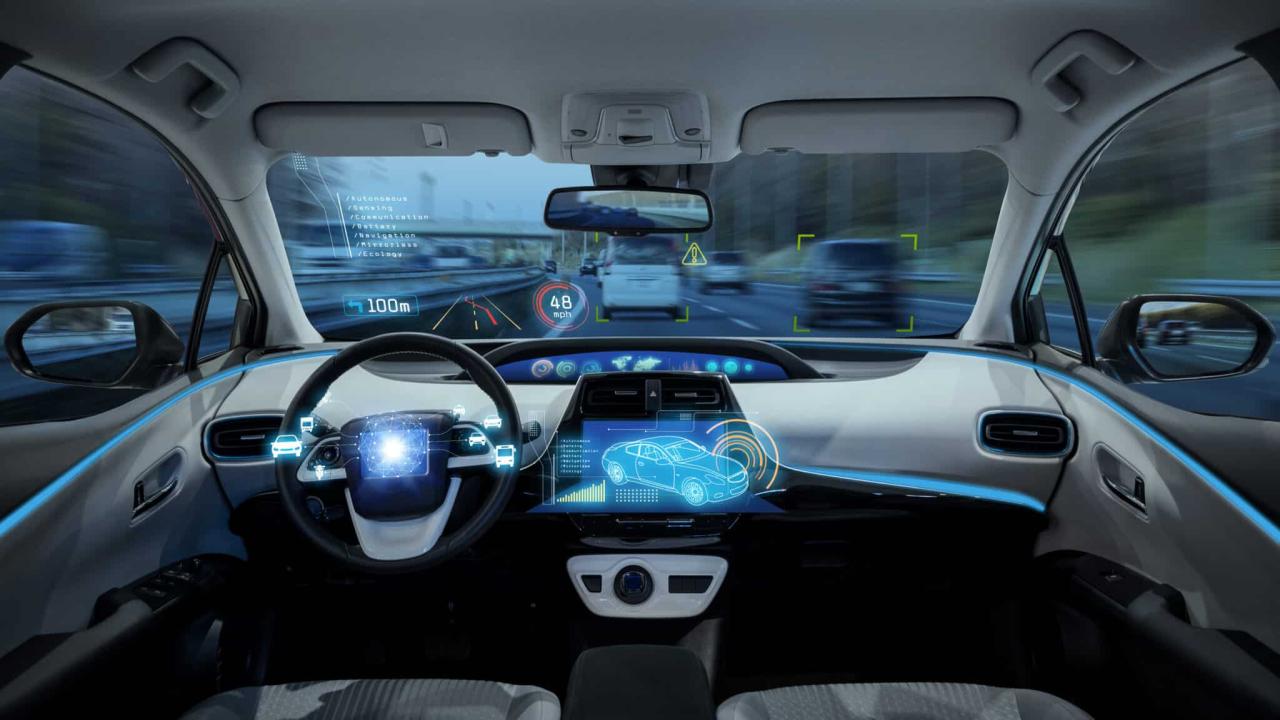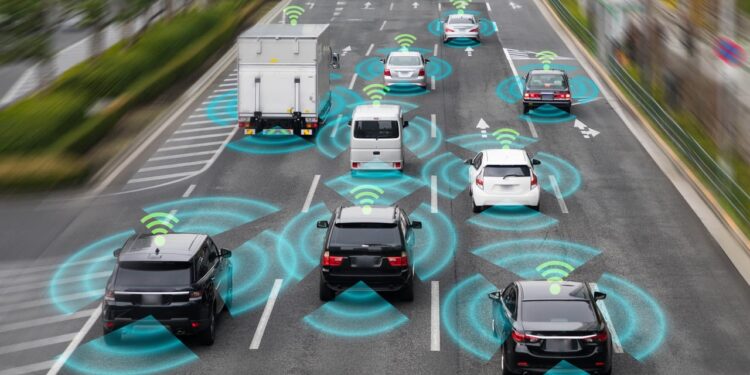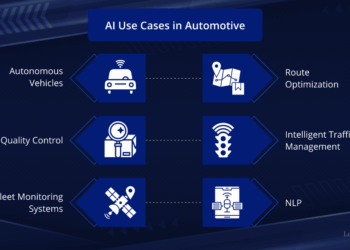The world of automotive technology has been advancing rapidly in recent years, and one of the most exciting developments is the rise of autonomous driving systems. From basic driver-assistance features to fully autonomous vehicles, the automotive industry is undergoing a transformation. Among the many levels of automation in cars, Level 2 autonomous driving has emerged as a standard feature in many modern vehicles, providing consumers with enhanced safety and convenience.
In this article, we will dive into the significance of Level 2 autonomous driving, how it works, and its impact on the future of automotive design. We will also examine the benefits and challenges of this technology and explore its role in the broader landscape of automotive innovation. Let’s take a closer look at why Level 2 autonomous driving is becoming the new standard.
Understanding Autonomous Driving Levels
Before we dive into the specifics of Level 2 autonomy, it’s important to understand the different levels of autonomous driving as defined by the Society of Automotive Engineers (SAE). These levels, ranging from Level 0 to Level 5, are used to classify vehicles based on their level of automation. Here’s a breakdown of each level:
A. Level 0 (No Automation)
At Level 0, the vehicle has no autonomous capabilities. The driver is entirely responsible for all aspects of driving, including acceleration, braking, steering, and monitoring the environment. The only “assistance” might be features such as a rearview camera or basic parking sensors.
B. Level 1 (Driver Assistance)
At this level, the car offers basic assistance, such as adaptive cruise control or lane-keeping assist. The driver is still in full control of the vehicle and must be ready to take over at any moment.
C. Level 2 (Partial Automation)
Level 2 vehicles offer more advanced driver assistance features that allow the car to handle specific tasks such as steering, acceleration, and braking. However, the driver is still required to remain engaged and keep their hands on the wheel at all times. The vehicle can control certain functions, but the driver must supervise the driving process and intervene when necessary.
D. Level 3 (Conditional Automation)
At Level 3, the vehicle can take over certain driving tasks in specific conditions, such as highway driving. The driver must be available to take over if the system requests, but the car can perform many tasks autonomously in designated situations.
E. Level 4 (High Automation)
At Level 4, the car can operate autonomously in certain conditions, such as urban driving or specific geographic areas. The driver is not required to take over, but the vehicle may have limitations in certain scenarios (e.g., extreme weather).
F. Level 5 (Full Automation)
Level 5 represents full autonomy. The vehicle can operate without any human intervention in any conditions or environment. No steering wheel or pedals are needed, and the car can drive itself completely, regardless of the situation.
What Is Level 2 Autonomous Driving?

Level 2 autonomous driving, often referred to as “partial automation,” is the point where cars begin to take over certain aspects of driving, including steering, acceleration, and braking, but the driver must still be actively involved in the driving process. At this level, the car’s systems can handle specific tasks, such as keeping the vehicle in its lane or adjusting speed based on traffic, but the driver must remain alert and ready to take control of the vehicle at any moment.
A. Features of Level 2 Autonomous Driving
Level 2 autonomous driving is a significant step forward in automotive technology, offering a wide range of features that enhance driving comfort and safety. These features include:
-
Adaptive Cruise Control (ACC): ACC allows the vehicle to automatically adjust its speed to maintain a safe distance from the car in front. The system can accelerate and brake as needed, depending on traffic conditions.
-
Lane-Keeping Assist (LKA): Lane-keeping assist helps the vehicle stay within its lane by making minor adjustments to steering. If the car begins to drift out of its lane, the system will gently steer it back into position.
-
Automatic Emergency Braking (AEB): AEB uses sensors to detect an impending collision and can automatically apply the brakes to prevent or mitigate the impact.
-
Traffic Jam Assist (TJA): This feature helps the vehicle maintain a safe distance and stay within its lane while driving in slow-moving traffic.
-
Parking Assistance: Many Level 2 vehicles offer parking assistance features, such as parallel parking and perpendicular parking, where the car can steer itself into a parking space with minimal driver intervention.
-
Hands-Free Driving in Specific Conditions: Some vehicles equipped with Level 2 autonomy can offer hands-free driving under certain conditions, such as on highways or when traffic is flowing steadily.
B. How Level 2 Works in Practice
In practice, Level 2 systems work by using a combination of cameras, radar, sensors, and other technologies to monitor the vehicle’s surroundings. These sensors continuously collect data about the road, other vehicles, and obstacles. The car’s onboard computers then use this information to make real-time decisions about how to control the vehicle.
For instance, if the car detects that it is approaching a curve, the steering will automatically adjust to help the vehicle stay centered in its lane. If the vehicle detects that the traffic ahead has slowed down, the system will reduce the speed accordingly. However, the driver must still pay attention to the road and be prepared to intervene if necessary.
C. The Role of the Driver in Level 2
Despite the car’s ability to control certain functions, Level 2 still requires the driver to maintain control over the vehicle and monitor the driving environment. The driver must keep their hands on the wheel and be ready to take over if the system encounters a situation it cannot handle. For example, the system might struggle with complex road conditions, such as heavy rain, snow, or unclear lane markings, and the driver must be prepared to step in.
This level of automation is designed to reduce driver fatigue, particularly on long drives or in heavy traffic, while still ensuring that the driver remains in control and alert.
The Growing Popularity of Level 2 Autonomous Driving
Level 2 autonomous driving has rapidly gained traction in the automotive industry, and many automakers are now offering this technology as a standard feature in their vehicles. This shift is being driven by several factors:

A. Consumer Demand for Advanced Safety Features
Consumers today are increasingly looking for vehicles that offer advanced safety features, and Level 2 autonomous systems provide a significant boost in this area. With features like adaptive cruise control, automatic emergency braking, and lane-keeping assist, these systems make driving safer by helping to prevent accidents and reduce the likelihood of human error.
B. Regulatory Support for Autonomous Driving
Governments around the world are also beginning to recognize the importance of autonomous driving technologies and are taking steps to encourage their adoption. In many regions, regulatory bodies are working to update traffic laws and create frameworks that support the safe deployment of autonomous vehicles.
C. Technological Advancements in Sensors and Computing Power
The development of more advanced sensors, cameras, and computing systems has made it easier and more affordable for automakers to implement Level 2 autonomy. These advancements allow cars to process more data, make faster decisions, and offer a smoother, more reliable driving experience.
Challenges and Limitations of Level 2 Autonomous Driving
While Level 2 autonomous driving offers numerous benefits, it also comes with challenges and limitations that need to be addressed as the technology continues to evolve.
A. Driver Over-Reliance
One of the primary concerns with Level 2 autonomy is the potential for driver over-reliance. Since the system can handle certain driving tasks, drivers may become complacent and less engaged in the driving process. This is dangerous, as the driver may not be able to react quickly enough if the system encounters a situation it cannot handle.
B. Limited Capabilities in Complex Environments
While Level 2 systems are capable of managing many driving tasks, they still struggle in complex environments. For example, these systems may have difficulty with poorly marked roads, complex intersections, or adverse weather conditions. In these situations, the driver must be ready to take control at a moment’s notice.
C. Ethical and Legal Considerations
As autonomous driving technology continues to advance, ethical and legal questions arise. Who is responsible in the event of an accident involving an autonomous vehicle? How should the system be programmed to make life-or-death decisions in critical situations? These are questions that regulators, automakers, and society must address as the technology evolves.
The Future of Autonomous Driving
While Level 2 autonomy has already become a standard feature in many vehicles, the future of autonomous driving is much more complex. Automakers are already working toward higher levels of autonomy, with Level 3, Level 4, and Level 5 systems on the horizon. These systems promise to offer even greater levels of automation, with some vehicles potentially driving themselves completely without any human intervention.
As technology improves, we can expect to see more sophisticated systems that can handle a wider range of driving scenarios. However, the transition from Level 2 to higher levels of autonomy will require significant advancements in infrastructure, regulations, and public acceptance.
Conclusion
Level 2 autonomous driving is rapidly becoming a standard feature in many new vehicles, and it represents a major step forward in the evolution of automotive technology. By offering advanced driver-assistance features, Level 2 systems provide a safer and more convenient driving experience, while also preparing the way for future advancements in autonomous driving.
Despite its many benefits, Level 2 still requires active driver engagement and comes with its own set of challenges. However, as technology continues to improve, we can expect to see even more advanced systems that push the boundaries of what’s possible. For now, Level 2 serves as a valuable stepping stone on the road toward fully autonomous vehicles, providing a glimpse into the future of driving.















